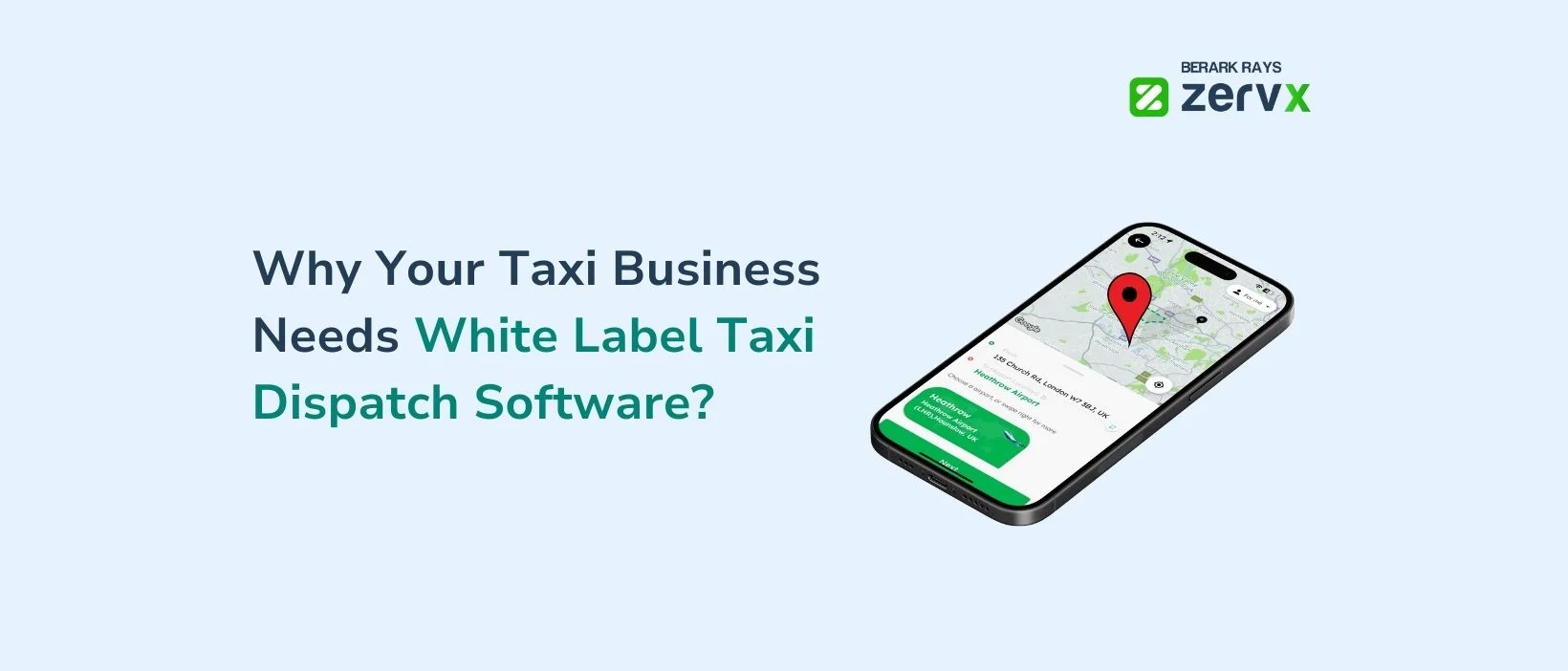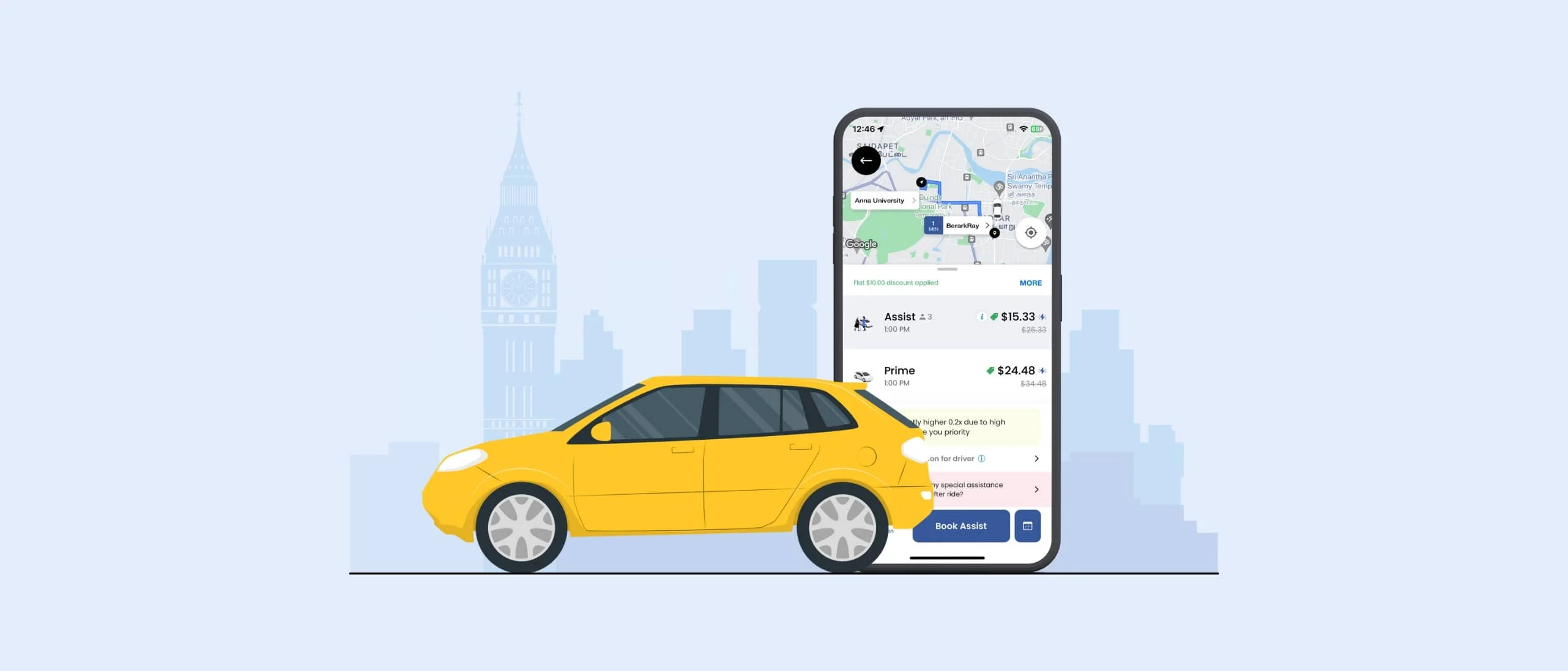Why Your Taxi Business Needs White Label Dispatch Software
Learn why white label taxi dispatch software is essential for your business. Launch faster, reduce costs, and compete effectively in the ride-hailing market!
John Sibin Raj
Apr 28, 20248 min read
The Growth of On-Demand Services
What Are On-Demand Services?
Why Are On-Demand Services So Popular?
Key Industries Changed by On-Demand Services
How Do On-Demand Services Work?
Benefits of On-Demand Services
Challenges and Criticisms
Final Thoughts
On-demand services have become a big part of our lives today. They make it easy to get things like food, rides, or home services with just a few clicks on your phone. But what exactly are these on-demand services, and why are they becoming so popular?
In this article, we’ll explain what on-demand services are, how they work, their benefits, and why they are growing so quickly.
Over the last few years, on-demand services have grown a lot. Experts say the on-demand economy could reach $400 billion by 2025. Well-known companies like Uber, Airbnb, DoorDash, and Instacart are just a few examples of services that have changed industries like ride hailing , food delivery , and grocery shopping. The U.S. market has been particularly active, with millions of Americans relying on these services for convenience. These platforms are popular because they offer convenience and save time.
Technology is the main reason behind this growth. With smartphones, real-time tracking, and easy online payments, people can now order a ride, food, or other services from anywhere. The pandemic also boosted the need for these services, especially those that offered contactless delivery.
On-demand services are platforms that allow you to quickly access a product or service. Whether you need a ride, a meal, or someone to clean your house, on-demand platforms make it possible to get what you need immediately. All you have to do is use an on demand app, and the service is delivered to you in real-time.
The rise of on-demand services can be explained by three main reasons:
Technology: As smartphones and apps have improved, it has become much easier to use these services. With GPS and online payments, you can get services without any hassle.
Convenience: People today want things fast and easy. On-demand services let you order something in minutes, saving you time.
Gig Economy: The rise of the gig economy has also played a significant role in the growth of on-demand services. Many people who work for on-demand platforms are independent workers or freelancers. This flexibility makes it easier for these platforms to have a lot of service providers available whenever consumers need them.
Several industries have been completely changed by on-demand services. Some of the biggest ones include:
The impact of on-demand services on the transportation industry has been particularly significant. Ride hailing services like Uber and Lyft have made it easy to get a ride whenever you need one, quickly replacing traditional taxi services. These platforms offer faster service, upfront pricing, and the ability to track your ride in real-time, making them incredibly popular among consumers.
Food and grocery delivery services have grown massively in recent years. Services like Instacart, Uber Eats and Grubhub provide on-demand delivery of groceries and meals, which allow you to get your meals or groceries delivered right to your door. These services have become essential, especially after the COVID-19 pandemic, as more people prefer contactless delivery and the convenience of shopping from home.
On-demand platforms like T askRabbit, Thumbtack, and Handy have made it easier than ever to get help with tasks like cleaning, home repairs, or even furniture assembly. These services allow people to find and hire professionals quickly, often for same-day appointments. This saves time and effort for busy individuals who need assistance with household tasks.
The logistics industry has been reshaped by on-demand platforms like Amazon, Postmates, and DoorDash. These services help consumers receive everything from packages to food deliveries quickly. Even local businesses have started using these platforms to offer faster delivery options to customers.
On-demand services work through a straightforward process. First, users access a service through a mobile app, whether it's for ordering a ride, food, or home cleaning. These apps use GPS technology to track the service in real-time, allowing users to know exactly when it will arrive or be delivered. The platforms typically operate on a commission-based model, meaning they take a small percentage from each transaction. This ensures that prices remain reasonable for customers while allowing service providers to earn a fair income.
Technology is the backbone of on-demand services. Mobile apps, GPS, and easy payment systems make it simple for people to book services like rides, food delivery, or home repairs. With just a few taps, users can order what they need, track its progress, and pay securely online. GPS helps service providers find the exact location quickly, and secure payments keep everything safe for both users and workers. This use of technology makes on-demand services fast, easy, and convenient, which is why they’ve become so popular.
On-demand services work on a supply and demand model. Service providers are motivated to offer their services at competitive prices, while consumers look for the best value. During busy times, many platforms use surge pricing, which raises prices when demand is high. This encourages more service providers to work during peak hours, balancing the supply of services with consumer demand. This model ensures that both customers and service providers benefit from the system.
By connecting consumers with providers in real-time, on-demand services make it easier than ever to get what you need, when you need it. With technology, a smart business model, and the use of supply and demand principles, these platforms create a win-win situation for everyone involved.
On-demand services provide several key benefits for both consumers and service providers:
One of the biggest benefits for consumers is the convenience. These platforms offer easy access to a wide range of services, with transparent pricing and real-time updates. Using GPS technology, consumers can expect timely and reliable service every time they book through an app.
For service providers, on-demand platforms offer flexibility and independence. Providers can choose when and how much they work, making it a great way to earn extra income or even a full-time living. The freedom to set flexible hours is a major appeal of these platforms.
On-demand services offer significant economic advantages. For service providers, lower overhead costs and increased productivity mean more profit potential. For consumers, these platforms often provide affordable pricing and access to a wide range of services that would otherwise be harder to find.
Consumers can choose exactly what they want, from the type of service to the provider, based on reviews, ratings, and availability. Many apps allow users to save preferences, making future bookings faster and more tailored to their needs. This personalized experience is a big reason why on-demand services have become so popular.
Another key benefit of on-demand services is speed. Whether it's ordering meals, booking a ride, or scheduling a handyman, these platforms are built for quick responses. Real-time technology ensures that consumers can get the services they need without long wait times, making them ideal for those who value efficiency and instant access.
Even though on-demand services are very popular, they face some challenges:
The regulatory landscape surrounding on-demand services is uncertain and often controversial. Service providers are not always subject to the same regulations as traditional businesses, which can create a level of ambiguity around issues like worker safety and liability.
There is a growing concern about the rights and protections of on-demand service providers. Independent contractors are not entitled to the same benefits as traditional employees and may lack access to healthcare, retirement benefits, and other protections.
The increase in the use of on-demand services has raised environmental concerns. Services like ride-sharing and food delivery have been criticized for increasing traffic congestion and pollution. Also, the use of low-wage workers has raised questions about the income inequality that on-demand services may perpetuate.
Final Thoughts
On-demand services have changed how we live by making it easier to get what we need when we need it. With technology improving every day, these services will continue to grow. However, it’s important that they address challenges like legal issues and environmental impact to ensure long-term success. In the future, on-demand services will likely be an even bigger part of our everyday lives.
The Growth of On-Demand Services
What Are On-Demand Services?
Why Are On-Demand Services So Popular?
Key Industries Changed by On-Demand Services
How Do On-Demand Services Work?
Benefits of On-Demand Services
Challenges and Criticisms
Final Thoughts
Blog

Learn why white label taxi dispatch software is essential for your business. Launch faster, reduce costs, and compete effectively in the ride-hailing market!
John Sibin Raj
Apr 28, 2024
The advent of taxi apps has transformed urban transportation, providing riders with convenient and affordable services.
John Sibin Raj
July 24, 2023
A taxi dispatch system serves as the backbone of any modern taxi business, managing the entire lifecycle of a ride from booking to payment.
John Sibin Raj
June 27, 2024